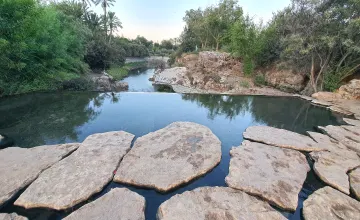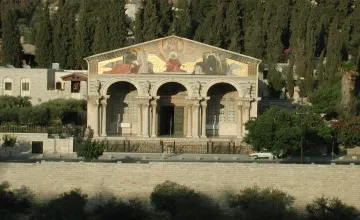Tel Shekmona National Park – Excursion Route Suggestion
Attractions travel guideDiscover the hidden treasures of Tel Shekmona National Park, a gem set against the stunning backdrop of Haifa’s coastline. Ideal for families and romantic outings, this short and scenic route offers a blend of historical intrigue and natural beauty, suitable for all ages.
Starting Point:
The Sea and Lake Research Institute, Haifa
End Point:
Return to the starting point
Historical Significance of Tel Shekmona
Recent archaeological discoveries have propelled Tel Shekmona into the spotlight as a site of global historical importance. Prof. Ayelet Gilboa and Dr. Golan Shloy, from the Zinman Institute of Archaeology at the University of Haifa, have unveiled findings that position Tel Shekmona, once a modest seaside site on the southern edges of Haifa, as a pivotal center of ancient industry.
Their research, published in the archaeological journal of Tel Aviv University, reveals that Tel Shekmona hosted the world’s largest and most productive scarlet dye factory around 3,000 years ago. This operation was a remarkable synergy of the administrative acumen of the biblical kingdom of Israel and the skilled Phoenician workers who specialized in the complex processes required to produce this valuable dye.
Prof. Gilboa drew parallels between Tel Shekmona and Tel Dor during our discussion, noting their shared historical trajectories. Initially a small fishing village that also produced scarlet dye, Tel Shekmona evolved into a significant industrial facility. In contrast, Tel Dor served as a principal port city. Both sites fell under the control of the Kingdom of Israel in the ninth century B.C. According to Prof. Gilboa, the primary motive for the kingdom’s expansion into the Carmel coast was economic rather than territorial or maritime dominance. The control of crimson dye production centers, like Shekmona, was likely a strategic move to dominate this lucrative industry.
These findings enrich our understanding of the historical and economic landscape of ancient Israel and highlight the sophisticated industrial activities that flourished under its influence.
Route Description:
Begin your journey at the iconic Sea and Lake Research Institute, located directly on the waterfront. This marks both the start and end of a leisurely route that explores the lesser-known beachfront and delves into the area’s rich history.
Adjacent to Tel Shekmona is the expansive Rosh Carmel Sea Reserve, where the Carmel Ridge extends into the sea, forming a unique underwater landscape. The marine reserve, stretching from the institute to Nahal Lotem’s mouth and westward into the sea, covers about 50,000 dunams. It not only preserves historical sites from the ancient settlement of Shakmona but also showcases geological wonders like weathered dolomite and limestone, and a unique reef formed by tuber family snails.
After departing from the Sea and Lake Research Institute, head south to reach the national park. Recently rejuvenated, Tel Shekmona was transformed from a neglected dumping ground into a beautifully landscaped area. The park now features native coastal vegetation and several protected species, enhancing its ecological value.
Climb to the top of Tel Shakmona for a panoramic view of the sea and the city. The site, known historically as a-Smak (“Mound of the Fish”), offers a vista sprinkled with archaeological remains dating back to as early as the 15th century BC. The area was a hub during the Byzantine era, evidenced by church ruins and intricate mosaic floors uncovered in multiple archaeological digs.
Continue your walk south along the boardwalk, passing by excavation sites and the hewn “hot tub” pool in the sea. Loop back north through Hecht Park and cross to Alex Garden. Near the garden, explore the ancient Shakmona caves, used historically for burial. The route concludes with a return to the Sea and Lake Research Institute.
How to Reach:
Access the starting point next to the Sea and Lake Research Institute via Hubert Humphrey Street in Haifa.
Please Note:
Swimming at the beach along this route is not permitted.
Embark on this enlightening excursion at Tel Shekmona National Park, where history and nature meet the Mediterranean Sea.








